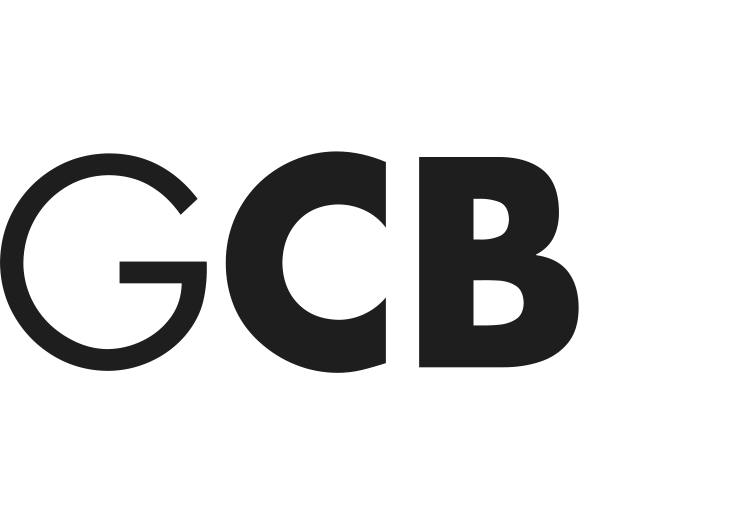GCB Kunstlexikon
NORBERT BISKY
Beitrag in Bearbeitung!
Museum Langmatt | Norbert Bisky | Fernwärme | arttv | Anhand des sensiblen gesellschaftlichen Themenspektrums Familie bietet «Fernwärme» einen konzentrierten Einblick in Biskys Malerei der letzten zehn Jahre und präsentiert zahlreiche neue Werke, die eigens für Baden entstanden sind. Ausgangspunkt hierfür waren historische Fotos der Familie Brown aus dem Archiv des Museums. In der Familiengeschichte der Browns, die 1900 als eine der Gründerfamilien der BBC (heutige ABB) die Langmatt errichten liessen, erkennt Norbert Bisky seine eigene wieder | YouTube
INSTAGRAM NORBERT BISKY
VIDEO | FILM NORBERT BISKY
ZDF heute journal | Norbert Bisky in Tel Aviv | 14.04.2015 | Jörg Walch | YouTube
Interview | Norbert Bisky | Deutschland | artnet | We sat down with German artist Norbert Bisky, best known for his frescos depicting adolescents. Bisky was actually a student of famed artist Georg Baselitz in Berlin and attended classes of Jim Dine at the Salzburg Summer Academy | YouTube
Norbert Bisky | Trilemma | König Galerie | September 9 – October 8, 2017 St. Agnes | Nave Opening: September 8, 6-9 pm König Galerie is pleased to present the first solo exhibition of German painter Norbert Bisky (b. 1970). Entitled “Trilemma” the show consists of an installation of paintings on canvas and paper staged in main room of the gallery (ST. AGNES I NAVE).The term trilemma describes a situation of conflict where you have to choose between three equally unfavourable or unacceptable options. This concept appears as a schematic model in many different social arenas including finance,transport policy, religion and philosophy. Norbert Bisky uses this motif of the threefold dead-end as a conceptual starting point for his predominantly large scaleworks that render chaos, violence and destruction in bold intense colours and soft pastel tones against a blue backdrop. Deprived of solid ground, often fragmented human figures hurtle wildly through the pictorial space along with architectural ruins, colliding with abstract planes of colour and destructive blazes. The dynamic compositions feature a complex web of references and relations that draw on current events and come together to form snapshots ofour world apparently gone to the dogs. The crucial number three in the word trilemma is taken up by the architecture of the exhibition space which consists of three monumental sections of wall. It also corresponds with the former function of the church St Agnes as the site of the Holy Trinity.The work that gives the exhibition its title shows a man with his back turned to the viewer in front of a frame-filling three-colour trilemma diagram that in turn is superimposed with a geographical map. Details of burning rubble,palm fronds and an interwoven mass of people are visible within the depicted borders. Put in relation to one another, these different elements portray a situation of territorial conflict as experienced by Tel Aviv and other cities today. Ongoing territorial disputes affect all areas of life, thus shaping society as a whole.Tel Aviv is one of the cities that Bisky visits regularly, Rio de Janeiro is another. The tropical vegetation invading the frame of several works serves as a reference to this Latin American city were the artist spends long periods of time. The conditions close to civil war in Rio de Janeiro today are alluded toin the work “Tiroteo” showing covered up figures against a tropical background.The covered up figure is a recurring motif in Norbert Bisky’s oeuvre. At first sight, these portrayals reference the protagonists of political uprisings,whose get-up – a hoodie and a piece of cloth covering the face – hardly changes,be it in Cairo or Hamburg, Sao Paolo or Charlottesville. The act of covering oneself up, however, can also be seen as the antithesis of the tendencies of our age, where social networks stage and expose every aspect of people’s own lives. The media philosopher Wilhelm Flusser calls this influx of images that surrounds and influences us every day the third catastrophe of humanity after the evolution of man and civilisation, his ideas acting as another conceptual reference of the exhibition. Flusser, a Jewish intellectual who spent most ofhis life in Brazil and whose central concern was the demise of the written word, takes a critical stance toward the shift from text to image as the main source of information of our time. The arbitrary nature of the images we encounter and the way they reinforce our own sense of instability and futility is echoed in the work “Iconoclasts”. It depicts a struggling, reeling group of people disappearing into a swirl of abstract planes of colour. We fight a futile battle against the influx of images that shape our present and our perception of the past. The much-debateddecision to remove historical monuments across the United States goes against the current understanding of history and revives memories of a divided Germany,linking it to Bisky’s own life growing up in Leipzig. The transformation of public space after the fall of the wall, and with it the erasure of former ideological reference points, was a daily reality for him.The smaller scale oil on paper works have a muted colour palette and predominantly portray figures freed from any concrete form of narrative before a backdrop of earthy brown tones. The motifs repeat themselves and are rendered spontaneously on the page – bathing scenes, fighting men, people apparently freed from the constraints of gravity hurtling across the surface of the image, bulky figures and hanged ones. The conceptual starting points of violence, instability and arbitrariness so present in Bisky’s work again come to the fore here and produce images that in diverse and complex ways present a chronicle of our time. For the occasion of the opening on September 8th the musician and DJ Henrik Schwarz developed a soundperformance | YouTube
BIOGRAFIE NORBERT BISKY
GEBURTSJAHR | GEBURTSORT | TODESJAHR | STERBEORT
AUSBILDUNG NORBERT BISKY
LEHRTÄTIGKEIT NORBERT BISKY
MITGLIEDSCHAFTEN NORBERT BISKY
AUSZEICHNUNGEN NORBERT BISKY
SAMMLUNGEN NORBERT BISKY
AUSSTELLUNGEN NORBERT BISKY
EINZELAUSSTELLUNGEN
AUSSTELLUNGSBETEILIGUNGEN
PROJEKTE | SYMPOSIEN
WERKBESCHREIBUNG NORBERT BISKY
SCHWERPUNKTE | MEDIEN
Malerei
STIL
THEMEN | MOTIVE | WERKE
Vitale, blonde, typisierte Jünglinge die in athletischen und sportlichen Posen vor Jugend und Kraft strotzen und vordergründig von einer freiheitlichen, heilen Welt erzählen und bei oberflächlicher Betrachtung Lebenslust in einer heilen Welt suggerieren. Dabei riskiert Norbert Bisky eine Verortung mit dem sozialistischen Realismus, mit dem er sich aber kritisch auseinandersetzt
DEFINITION | BESCHREIBUNG | MERKMALE
helle Farbigkeit, pastellige Farbpalette, von gleißendem Licht erfüllte Szenerien die eine fremd anmutende Distanz zum Betrachter aufbauen
STICHWORTE NORBERT BISKY
international erfolgreicher zeitgenössischer deutscher Künstler
ZITATE NORBERT BISKY
„Gerade in der Kunst geht es darum Grenzen zu verändern und zu erweitern. Und immer muss Kunst in Frage stellen und eine sehr ungewöhnliche neue Perspektive eröffnen.“ | Norbert Bisky
TEXT | BIBLIOGRAPHIE NORBERT BISKY
LINKS NORBERT BISKY
HOMEPAGE NORBERT BISKY
NORBERT BISKY
Beitrag in Bearbeitung!
Museum Langmatt | Norbert Bisky | Fernwärme | arttv | Anhand des sensiblen gesellschaftlichen Themenspektrums Familie bietet «Fernwärme» einen konzentrierten Einblick in Biskys Malerei der letzten zehn Jahre und präsentiert zahlreiche neue Werke, die eigens für Baden entstanden sind. Ausgangspunkt hierfür waren historische Fotos der Familie Brown aus dem Archiv des Museums. In der Familiengeschichte der Browns, die 1900 als eine der Gründerfamilien der BBC (heutige ABB) die Langmatt errichten liessen, erkennt Norbert Bisky seine eigene wieder | YouTube
INSTAGRAM NORBERT BISKY
VIDEO | FILM NORBERT BISKY
ZDF heute journal | Norbert Bisky in Tel Aviv | 14.04.2015 | Jörg Walch | YouTube
Interview | Norbert Bisky | Deutschland | artnet | We sat down with German artist Norbert Bisky, best known for his frescos depicting adolescents. Bisky was actually a student of famed artist Georg Baselitz in Berlin and attended classes of Jim Dine at the Salzburg Summer Academy | YouTube
Norbert Bisky | Trilemma | König Galerie | September 9 – October 8, 2017 St. Agnes | Nave Opening: September 8, 6-9 pm König Galerie is pleased to present the first solo exhibition of German painter Norbert Bisky (b. 1970). Entitled “Trilemma” the show consists of an installation of paintings on canvas and paper staged in main room of the gallery (ST. AGNES I NAVE).The term trilemma describes a situation of conflict where you have to choose between three equally unfavourable or unacceptable options. This concept appears as a schematic model in many different social arenas including finance,transport policy, religion and philosophy. Norbert Bisky uses this motif of the threefold dead-end as a conceptual starting point for his predominantly large scaleworks that render chaos, violence and destruction in bold intense colours and soft pastel tones against a blue backdrop. Deprived of solid ground, often fragmented human figures hurtle wildly through the pictorial space along with architectural ruins, colliding with abstract planes of colour and destructive blazes. The dynamic compositions feature a complex web of references and relations that draw on current events and come together to form snapshots ofour world apparently gone to the dogs. The crucial number three in the word trilemma is taken up by the architecture of the exhibition space which consists of three monumental sections of wall. It also corresponds with the former function of the church St Agnes as the site of the Holy Trinity.The work that gives the exhibition its title shows a man with his back turned to the viewer in front of a frame-filling three-colour trilemma diagram that in turn is superimposed with a geographical map. Details of burning rubble,palm fronds and an interwoven mass of people are visible within the depicted borders. Put in relation to one another, these different elements portray a situation of territorial conflict as experienced by Tel Aviv and other cities today. Ongoing territorial disputes affect all areas of life, thus shaping society as a whole.Tel Aviv is one of the cities that Bisky visits regularly, Rio de Janeiro is another. The tropical vegetation invading the frame of several works serves as a reference to this Latin American city were the artist spends long periods of time. The conditions close to civil war in Rio de Janeiro today are alluded toin the work “Tiroteo” showing covered up figures against a tropical background.The covered up figure is a recurring motif in Norbert Bisky’s oeuvre. At first sight, these portrayals reference the protagonists of political uprisings,whose get-up – a hoodie and a piece of cloth covering the face – hardly changes,be it in Cairo or Hamburg, Sao Paolo or Charlottesville. The act of covering oneself up, however, can also be seen as the antithesis of the tendencies of our age, where social networks stage and expose every aspect of people’s own lives. The media philosopher Wilhelm Flusser calls this influx of images that surrounds and influences us every day the third catastrophe of humanity after the evolution of man and civilisation, his ideas acting as another conceptual reference of the exhibition. Flusser, a Jewish intellectual who spent most ofhis life in Brazil and whose central concern was the demise of the written word, takes a critical stance toward the shift from text to image as the main source of information of our time. The arbitrary nature of the images we encounter and the way they reinforce our own sense of instability and futility is echoed in the work “Iconoclasts”. It depicts a struggling, reeling group of people disappearing into a swirl of abstract planes of colour. We fight a futile battle against the influx of images that shape our present and our perception of the past. The much-debateddecision to remove historical monuments across the United States goes against the current understanding of history and revives memories of a divided Germany,linking it to Bisky’s own life growing up in Leipzig. The transformation of public space after the fall of the wall, and with it the erasure of former ideological reference points, was a daily reality for him.The smaller scale oil on paper works have a muted colour palette and predominantly portray figures freed from any concrete form of narrative before a backdrop of earthy brown tones. The motifs repeat themselves and are rendered spontaneously on the page – bathing scenes, fighting men, people apparently freed from the constraints of gravity hurtling across the surface of the image, bulky figures and hanged ones. The conceptual starting points of violence, instability and arbitrariness so present in Bisky’s work again come to the fore here and produce images that in diverse and complex ways present a chronicle of our time. For the occasion of the opening on September 8th the musician and DJ Henrik Schwarz developed a soundperformance | YouTube
BIOGRAFIE NORBERT BISKY
GEBURTSJAHR | GEBURTSORT | TODESJAHR | STERBEORT
AUSBILDUNG NORBERT BISKY
LEHRTÄTIGKEIT NORBERT BISKY
MITGLIEDSCHAFTEN NORBERT BISKY
AUSZEICHNUNGEN NORBERT BISKY
SAMMLUNGEN NORBERT BISKY
AUSSTELLUNGEN NORBERT BISKY
EINZELAUSSTELLUNGEN
AUSSTELLUNGSBETEILIGUNGEN
PROJEKTE | SYMPOSIEN
WERKBESCHREIBUNG NORBERT BISKY
SCHWERPUNKTE | MEDIEN
Malerei
STIL
THEMEN | MOTIVE | WERKE
Vitale, blonde, typisierte Jünglinge die in athletischen und sportlichen Posen vor Jugend und Kraft strotzen und vordergründig von einer freiheitlichen, heilen Welt erzählen und bei oberflächlicher Betrachtung Lebenslust in einer heilen Welt suggerieren. Dabei riskiert Norbert Bisky eine Verortung mit dem sozialistischen Realismus, mit dem er sich aber kritisch auseinandersetzt
DEFINITION | BESCHREIBUNG | MERKMALE
helle Farbigkeit, pastellige Farbpalette, von gleißendem Licht erfüllte Szenerien die eine fremd anmutende Distanz zum Betrachter aufbauen
STICHWORTE NORBERT BISKY
international erfolgreicher zeitgenössischer deutscher Künstler
ZITATE NORBERT BISKY
„Gerade in der Kunst geht es darum Grenzen zu verändern und zu erweitern. Und immer muss Kunst in Frage stellen und eine sehr ungewöhnliche neue Perspektive eröffnen.“ | Norbert Bisky
TEXT | BIBLIOGRAPHIE NORBERT BISKY
LINKS NORBERT BISKY
HOMEPAGE NORBERT BISKY
NORBERT BISKY
Beitrag in Bearbeitung!
Museum Langmatt | Norbert Bisky | Fernwärme | arttv | Anhand des sensiblen gesellschaftlichen Themenspektrums Familie bietet «Fernwärme» einen konzentrierten Einblick in Biskys Malerei der letzten zehn Jahre und präsentiert zahlreiche neue Werke, die eigens für Baden entstanden sind. Ausgangspunkt hierfür waren historische Fotos der Familie Brown aus dem Archiv des Museums. In der Familiengeschichte der Browns, die 1900 als eine der Gründerfamilien der BBC (heutige ABB) die Langmatt errichten liessen, erkennt Norbert Bisky seine eigene wieder | YouTube
INSTAGRAM NORBERT BISKY
VIDEO | FILM NORBERT BISKY
ZDF heute journal | Norbert Bisky in Tel Aviv | 14.04.2015 | Jörg Walch | YouTube
Interview | Norbert Bisky | Deutschland | artnet | We sat down with German artist Norbert Bisky, best known for his frescos depicting adolescents. Bisky was actually a student of famed artist Georg Baselitz in Berlin and attended classes of Jim Dine at the Salzburg Summer Academy | YouTube
Norbert Bisky | Trilemma | König Galerie | September 9 – October 8, 2017 St. Agnes | Nave Opening: September 8, 6-9 pm König Galerie is pleased to present the first solo exhibition of German painter Norbert Bisky (b. 1970). Entitled “Trilemma” the show consists of an installation of paintings on canvas and paper staged in main room of the gallery (ST. AGNES I NAVE).The term trilemma describes a situation of conflict where you have to choose between three equally unfavourable or unacceptable options. This concept appears as a schematic model in many different social arenas including finance,transport policy, religion and philosophy. Norbert Bisky uses this motif of the threefold dead-end as a conceptual starting point for his predominantly large scaleworks that render chaos, violence and destruction in bold intense colours and soft pastel tones against a blue backdrop. Deprived of solid ground, often fragmented human figures hurtle wildly through the pictorial space along with architectural ruins, colliding with abstract planes of colour and destructive blazes. The dynamic compositions feature a complex web of references and relations that draw on current events and come together to form snapshots ofour world apparently gone to the dogs. The crucial number three in the word trilemma is taken up by the architecture of the exhibition space which consists of three monumental sections of wall. It also corresponds with the former function of the church St Agnes as the site of the Holy Trinity.The work that gives the exhibition its title shows a man with his back turned to the viewer in front of a frame-filling three-colour trilemma diagram that in turn is superimposed with a geographical map. Details of burning rubble,palm fronds and an interwoven mass of people are visible within the depicted borders. Put in relation to one another, these different elements portray a situation of territorial conflict as experienced by Tel Aviv and other cities today. Ongoing territorial disputes affect all areas of life, thus shaping society as a whole.Tel Aviv is one of the cities that Bisky visits regularly, Rio de Janeiro is another. The tropical vegetation invading the frame of several works serves as a reference to this Latin American city were the artist spends long periods of time. The conditions close to civil war in Rio de Janeiro today are alluded toin the work “Tiroteo” showing covered up figures against a tropical background.The covered up figure is a recurring motif in Norbert Bisky’s oeuvre. At first sight, these portrayals reference the protagonists of political uprisings,whose get-up – a hoodie and a piece of cloth covering the face – hardly changes,be it in Cairo or Hamburg, Sao Paolo or Charlottesville. The act of covering oneself up, however, can also be seen as the antithesis of the tendencies of our age, where social networks stage and expose every aspect of people’s own lives. The media philosopher Wilhelm Flusser calls this influx of images that surrounds and influences us every day the third catastrophe of humanity after the evolution of man and civilisation, his ideas acting as another conceptual reference of the exhibition. Flusser, a Jewish intellectual who spent most ofhis life in Brazil and whose central concern was the demise of the written word, takes a critical stance toward the shift from text to image as the main source of information of our time. The arbitrary nature of the images we encounter and the way they reinforce our own sense of instability and futility is echoed in the work “Iconoclasts”. It depicts a struggling, reeling group of people disappearing into a swirl of abstract planes of colour. We fight a futile battle against the influx of images that shape our present and our perception of the past. The much-debateddecision to remove historical monuments across the United States goes against the current understanding of history and revives memories of a divided Germany,linking it to Bisky’s own life growing up in Leipzig. The transformation of public space after the fall of the wall, and with it the erasure of former ideological reference points, was a daily reality for him.The smaller scale oil on paper works have a muted colour palette and predominantly portray figures freed from any concrete form of narrative before a backdrop of earthy brown tones. The motifs repeat themselves and are rendered spontaneously on the page – bathing scenes, fighting men, people apparently freed from the constraints of gravity hurtling across the surface of the image, bulky figures and hanged ones. The conceptual starting points of violence, instability and arbitrariness so present in Bisky’s work again come to the fore here and produce images that in diverse and complex ways present a chronicle of our time. For the occasion of the opening on September 8th the musician and DJ Henrik Schwarz developed a soundperformance | YouTube
BIOGRAFIE NORBERT BISKY
GEBURTSJAHR | GEBURTSORT | TODESJAHR | STERBEORT
AUSBILDUNG NORBERT BISKY
LEHRTÄTIGKEIT NORBERT BISKY
MITGLIEDSCHAFTEN NORBERT BISKY
AUSZEICHNUNGEN NORBERT BISKY
SAMMLUNGEN NORBERT BISKY
AUSSTELLUNGEN NORBERT BISKY
EINZELAUSSTELLUNGEN
AUSSTELLUNGSBETEILIGUNGEN
PROJEKTE | SYMPOSIEN
WERKBESCHREIBUNG NORBERT BISKY
SCHWERPUNKTE | MEDIEN
Malerei
STIL
THEMEN | MOTIVE | WERKE
Vitale, blonde, typisierte Jünglinge die in athletischen und sportlichen Posen vor Jugend und Kraft strotzen und vordergründig von einer freiheitlichen, heilen Welt erzählen und bei oberflächlicher Betrachtung Lebenslust in einer heilen Welt suggerieren. Dabei riskiert Norbert Bisky eine Verortung mit dem sozialistischen Realismus, mit dem er sich aber kritisch auseinandersetzt
DEFINITION | BESCHREIBUNG | MERKMALE
helle Farbigkeit, pastellige Farbpalette, von gleißendem Licht erfüllte Szenerien die eine fremd anmutende Distanz zum Betrachter aufbauen
STICHWORTE NORBERT BISKY
international erfolgreicher zeitgenössischer deutscher Künstler
ZITATE NORBERT BISKY
„Gerade in der Kunst geht es darum Grenzen zu verändern und zu erweitern. Und immer muss Kunst in Frage stellen und eine sehr ungewöhnliche neue Perspektive eröffnen.“ | Norbert Bisky
TEXT | BIBLIOGRAPHIE NORBERT BISKY
LINKS NORBERT BISKY
HOMEPAGE NORBERT BISKY



